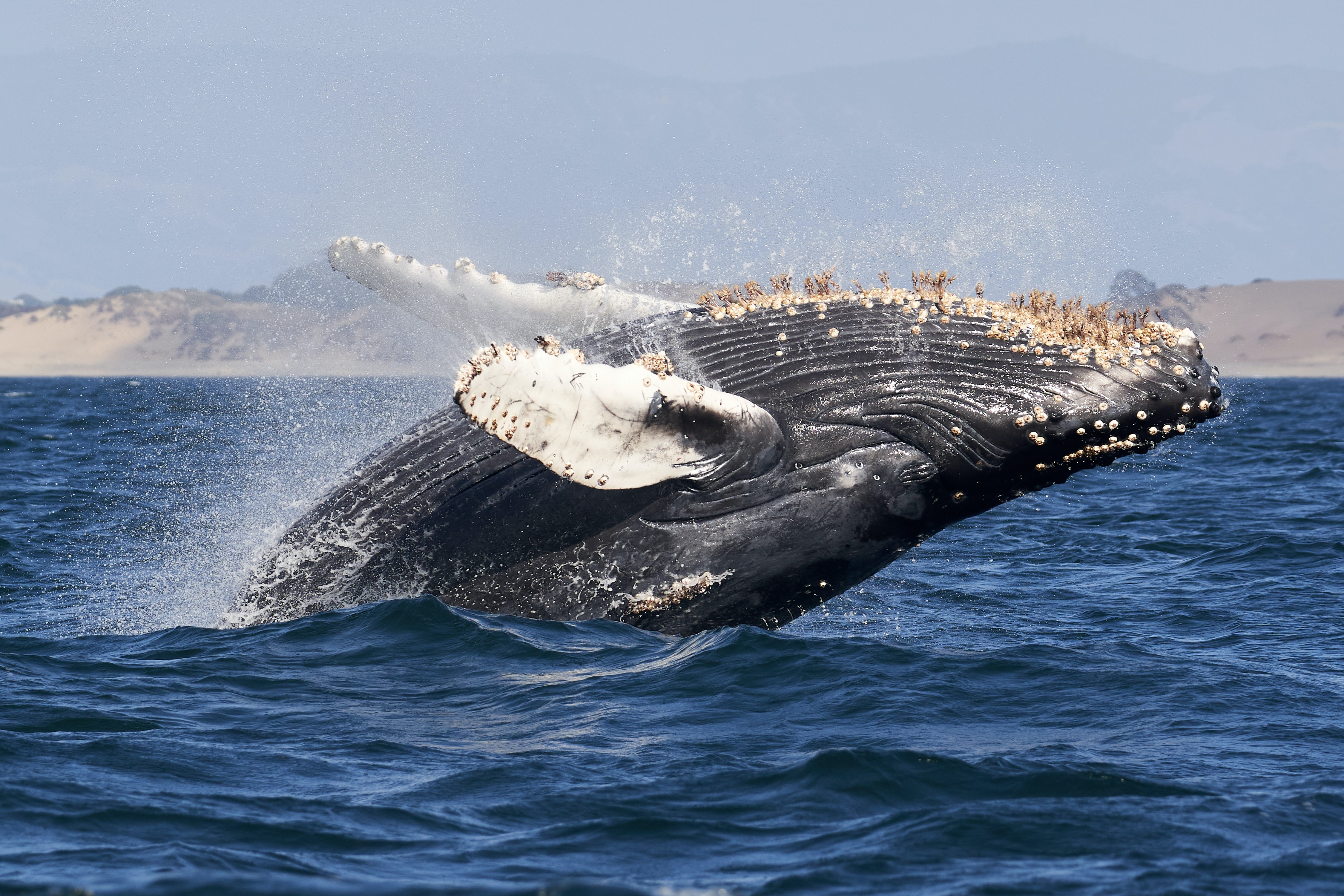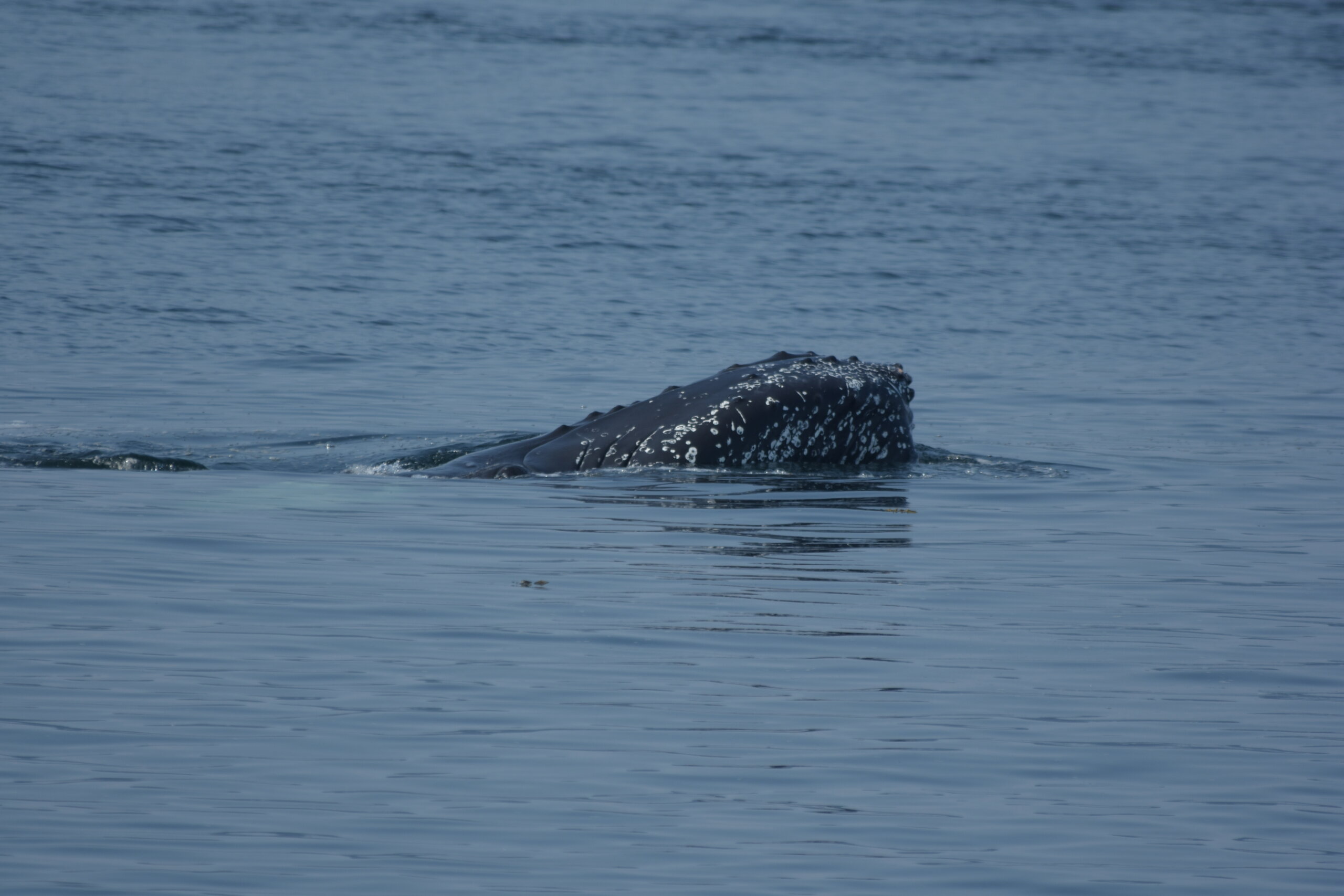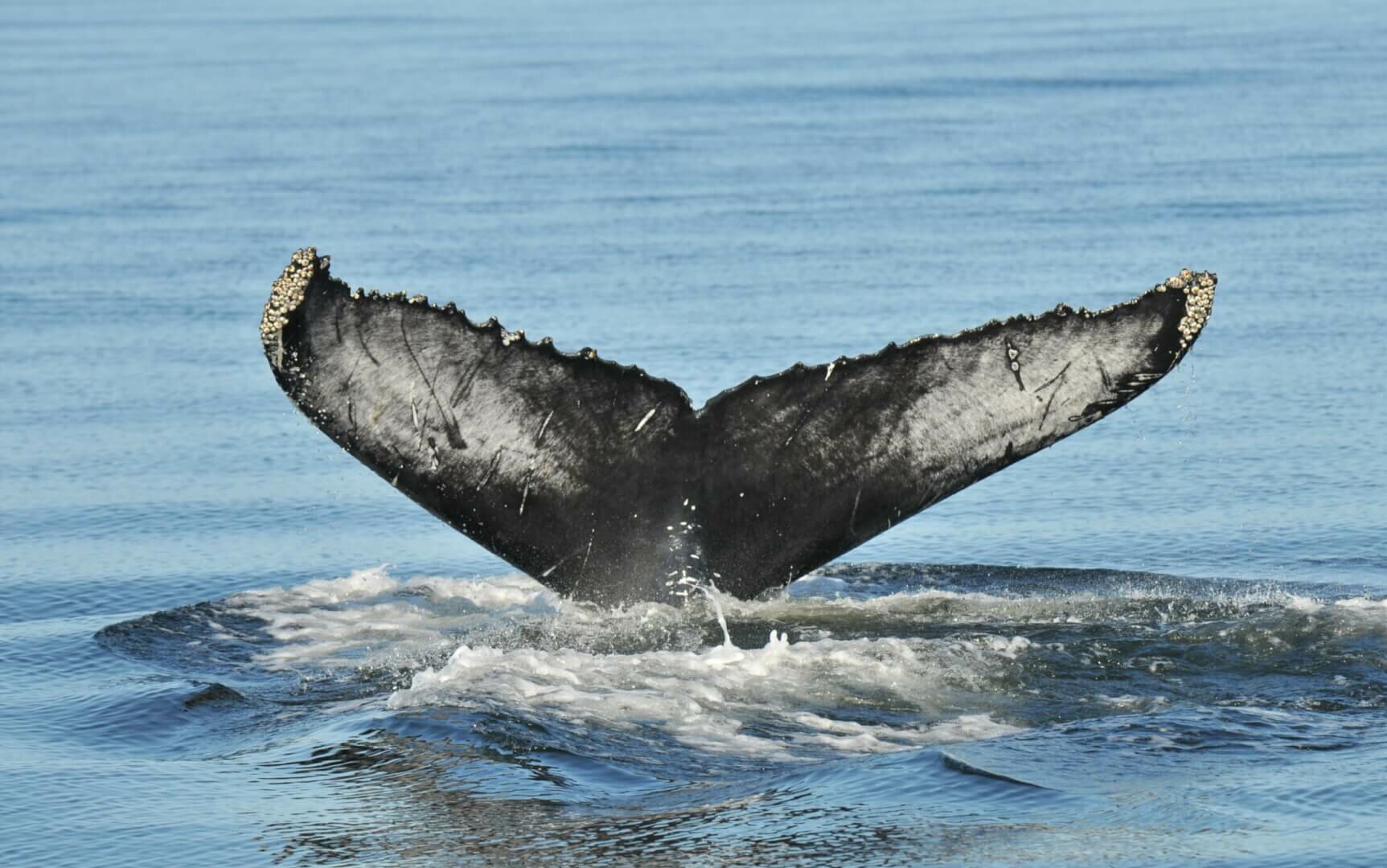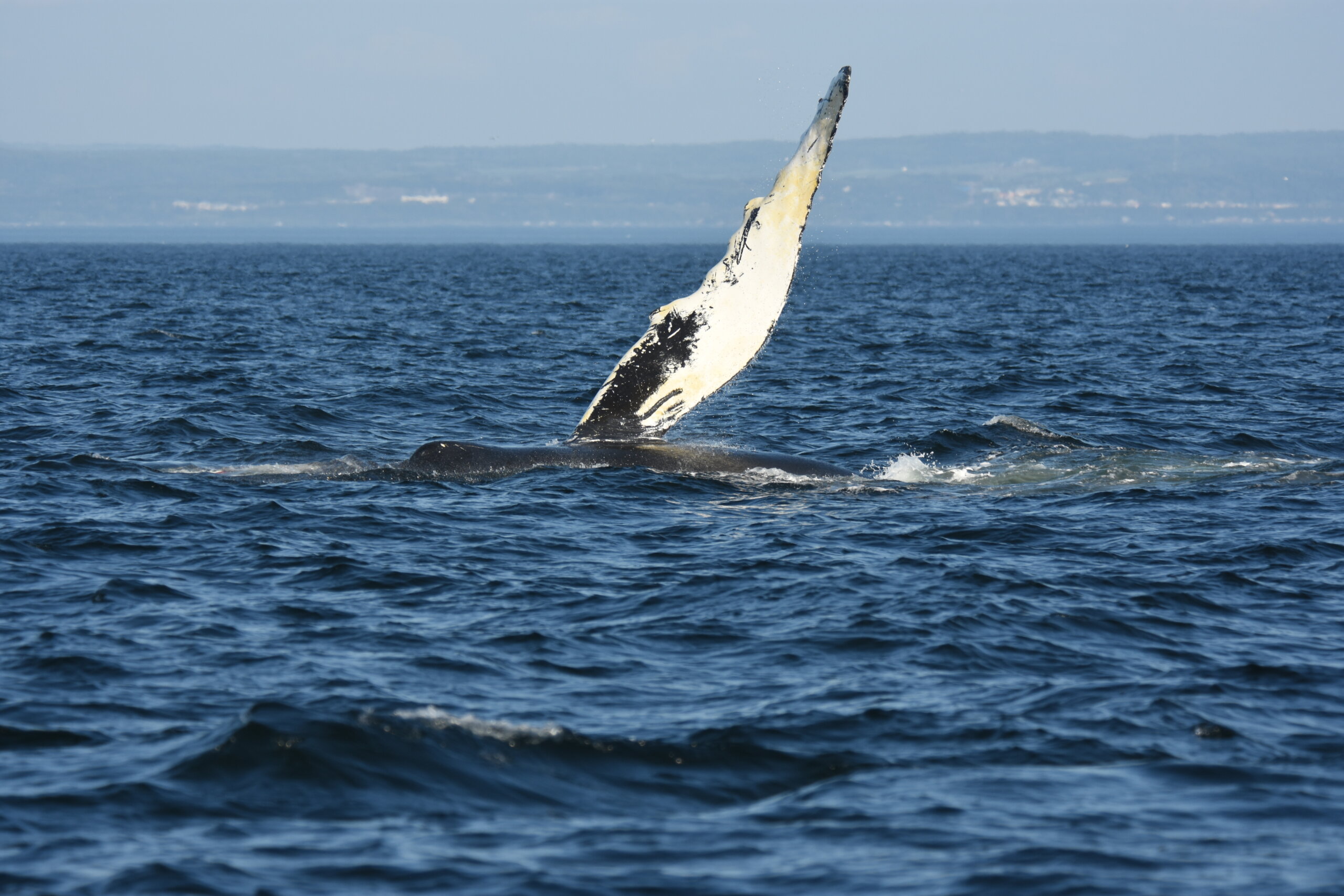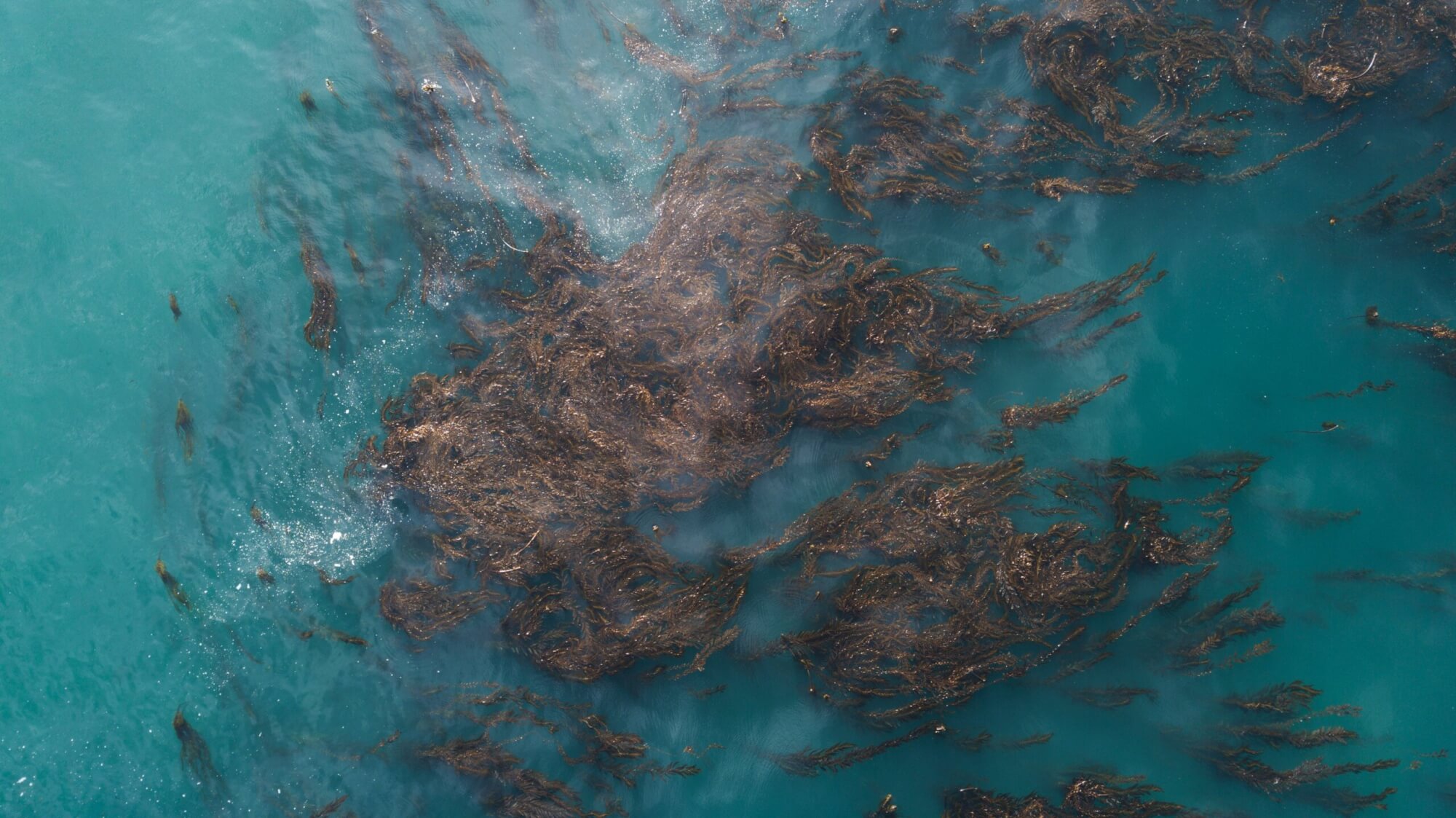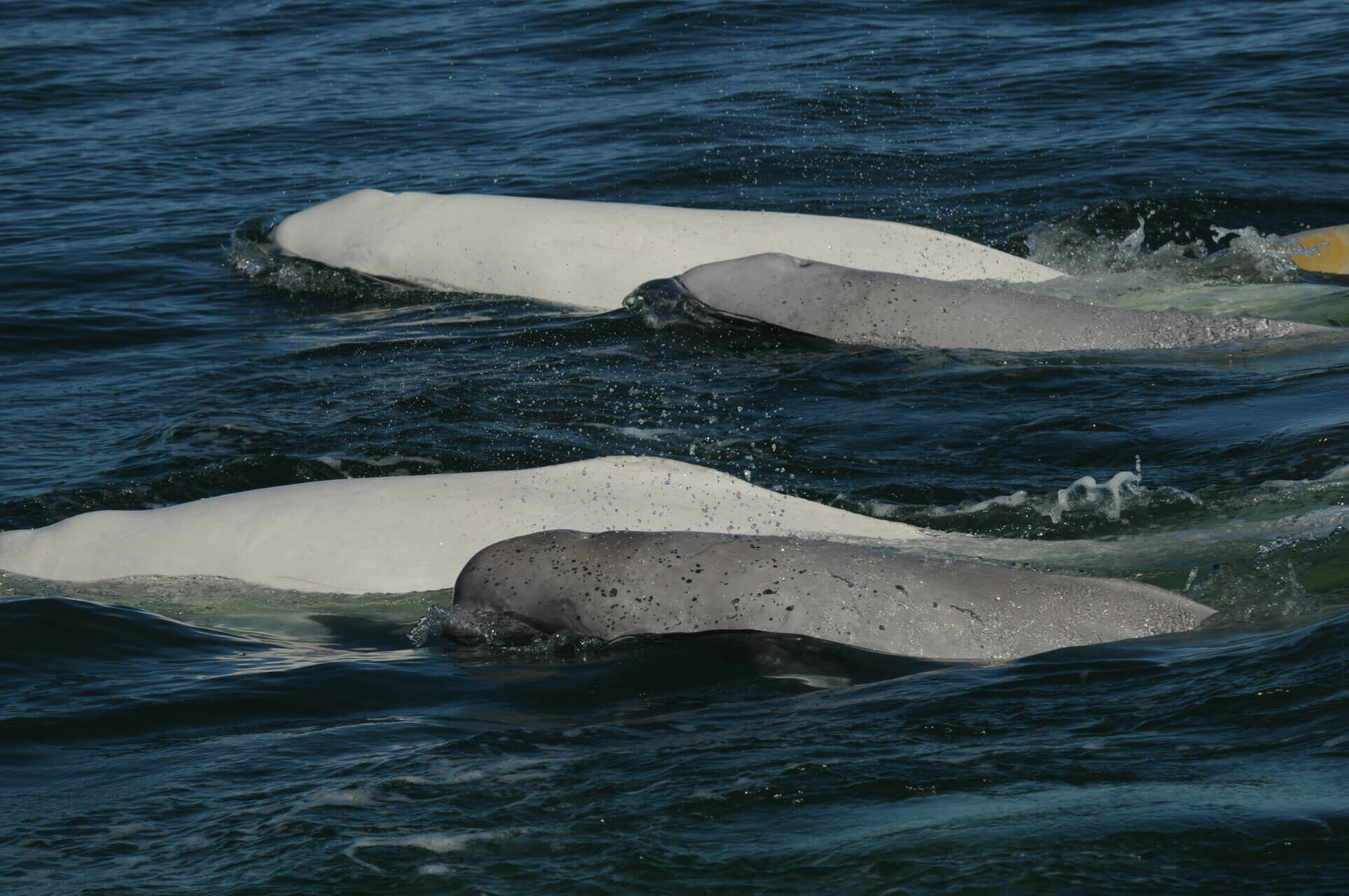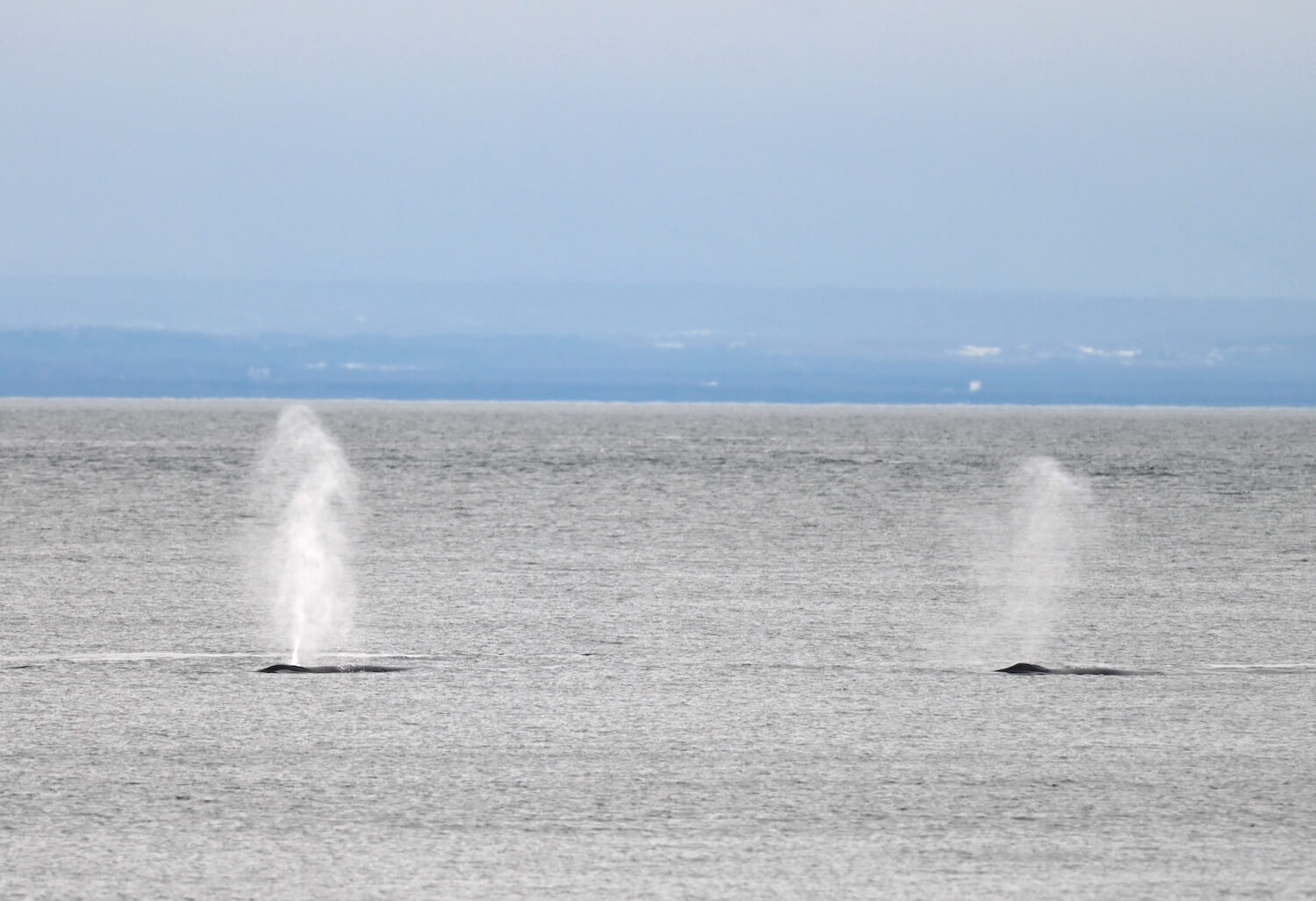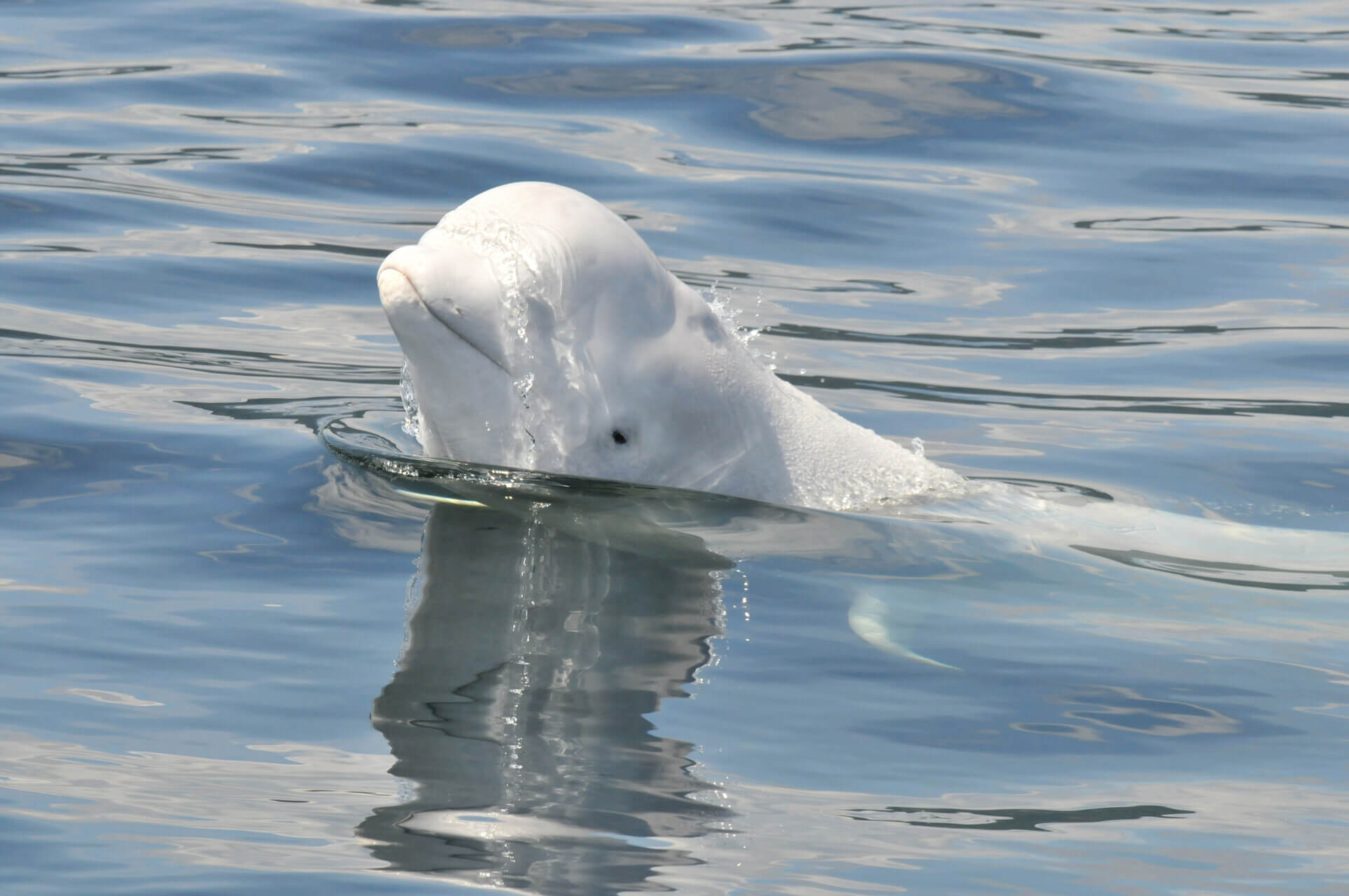In an immense expanse of blue, a long and slender silhouette gently rises above the water surface. A string of long golden filaments wraps around it and cascades down onto the waves surrounding this strange creature of the depths. The sequence repeats itself, the amber mane glistening under the soft rays of the sun with each movement of the whale’s pectoral fin. A few minutes later, it is the animal’s head that moves between the copper-coloured algae.
Kelping, a mysterious behaviour that consists of an animal interacting with algae, has intrigued scientists for years. Could it be a form of play, a way to stimulate the senses, a way to get rid of unwanted parasites or simply a trick for maintaining soft skin? It would appear that all of these answers might be valid!
Recently, scientists at Australia’s Griffith University analyzed nearly a hundred videos and photos dating back to 2007 of humpback whales rolling and playing in seaweed. Four populations were recorded in these images: those of the northern and southern hemispheres of the northeast Pacific, that of the North Atlantic, and that of the east and west coasts of Australia. Analysis of their behaviour has led to some astonishing conclusions!
Play or sensory stimulation
In the videos analyzed by the scientists, the rostrum was the part of the whale’s body most regularly observed in contact with algae. This was followed by the section between the pectoral fins and the dorsal fin, then by the area between the dorsal fin and the caudal fin. The research team also noted that with each occurrence, the whales appeared to actively try to maintain the algae in place on these parts of their bodies. But why such effort to remain cloaked in seaweed?
Small masses called follicles, each containing a single hair, are found on a humpback’s rostrum. Hair acts as a sensory tools in most mammals, and whales are no exception: Each of these follicles contains 300 to 400 nerves! These masses may even play a role in detecting plankton, according to some studies. For humpbacks, holding seaweed on their heads might therefore be a voluntary gesture, in other words a means of intentionally stimulating their senses!
Furthermore, studies have shown that humpback whales, like other cetaceans, sometimes “play” with pieces of wood, rope or even jellyfish. They might also interact with other animals such as dolphins and seals. But before being qualified as “play,” an animal’s behaviour must meet several criteria: it must be voluntary and seemingly pleasant, diverge from the more serious behaviours usually observed and take place when the animal does not appear to be stressed or hungry. According to this definition, interacting with algae would therefore be a form of play and would demonstrate that humpback whales are capable of complex interactions with their environment: as much to have fun as to stimulate their senses!
Goodbye parasites, hello soft skin!
For a humpback whale, playing in the seaweed might also be a fantastic way to keep its skin healthy. Why? Because a plethora of benefits are attributed to algae!
Rich in bioactive compounds, algae (especially brown algae) are believed to help humpbacks rid their skin of bacteria. Indeed, the skin of humpbacks is a prime place for a number of bacteria that establish themselves on the rostrum as well as the pectoral, dorsal and caudal fins. Maintaining prolonged contact with algae in these areas might therefore be beneficial for the whales, as any proliferation of bacteria is synonymous with the risk of skin infections.
In addition to bacteria, many parasites use whales as a means of transport including diatoms (small microscopic algae) and barnacles (a type of crustacean). Once again, algae might play a key role in their removal. However, the influence of algae on the presence of bacteria and parasites warrants further study.
Celebrity whales
Who would have ever guessed that the advent and then omnipresence of social networks in our lives would contribute to scientific research on whales? But get this: all the videos studied by Griffith University scientists were sourced from online platforms such as Facebook, Instagram and Flickr! Being a difficult behaviour to document, kelping was an ideal candidate for study through social media.
Other studies have previously used social media to study rare species or unusual behaviours and the results have proven to be quite reliable. However, the majority of publications made on any of these online platforms comes from countries where social networks are highly popular, which leads to a certain bias in data collection.
Scientists ensure, however, that this type of information gathering will never replace the true scientific method, though it can prove useful in cases where the volume of data is limited. Nevertheless, it is important to remember that approach attempts are regulated and often prohibited in certain parts of the world, particularly with regard to the use of drones. Learn the law before you make a star out of a whale while jeopardizing its well-being – and your own!


